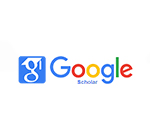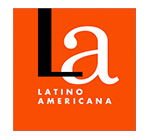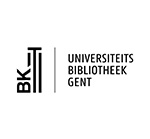Repensando la Agresión entre Adolescentes: Una Revisión de la Teoría de Estrategias de Control de Recursos en Latinoamérica
DOI:
https://doi.org/10.53940/reys.v2i3.61Palabras clave:
agresión, prosocialidad, adolescentes, escuelasResumen
La Teoría de Control de Recursos es un planteamiento con un poco más de 20 años en la literatura de la psicología del desarrollo. Esta sugiere que los seres humanos desplegamos estrategias coercitivas y/o estrategias prosociales para alcanzar nuestros objetivos sociales. Este marco conceptual ha logrado identificar que la conducta agresiva entre adolescentes es utilizada instrumentalmente para obtener estatus social. Sin embargo, estos estudios son escasos con poblaciones latinoamericanas, por lo que es necesario promoverlos para diseñar intervenciones contextualizadas para la agresión escolar.
Descargas
Referencias
Berger, C., Batanova, M., y Cance, J. D. (2015). Aggressive and Prosocial? Examining Latent Profiles of Behavior, Social Status, Machiavellianism, and Empathy. Journal of Youth and Adolescence, 44(12), 2230–2244. doi: 10.1007/s10964-015-0298-9 DOI: https://doi.org/10.1007/s10964-015-0298-9
Campbell, S. B., Spieker, S., Vandergrift, N., Belsky, J., y Burchinal, M. (2010). Predictors and sequaele of trajectories of physical aggression in school-age boys and girls. Development and Psychopathology, 22, 133-150. doi: 10.1017/s0954579409990319 DOI: https://doi.org/10.1017/S0954579409990319
Cillessen, A. H. N., Mayeux, L., Ha, T., de Bruyn, E. H., y LaFontana, K. M. (2013). Aggressive effects of prioritizing popularity in early adolescence. Aggressive Behavior, 40(3), 204–213. doi: 10.1002/ab.21518 DOI: https://doi.org/10.1002/ab.21518
Cleverley, K., Szatmari, P., Vaillancourt, T., Boyle, M. y Lipman, E. (2012). Developmental trajectories of physical and indirect aggression from late childhood to adolescence: sex differences and outcomes in emerging adulthood. Journal of the American Academy of Child & Adolescent Psychiatry, 51(10), 1037–1051. doi: 10.1016/j.jaac.2012.07.010 DOI: https://doi.org/10.1016/j.jaac.2012.07.010
Crick, N. R., y Dodge, K. A. (1994). A review and reformulation of the social-information processing mechanism in children’s social adjustments. Psychological Bulletin, 115(1), 74-101. doi: 10.1037/0033-2909.115.1.74 DOI: https://doi.org/10.1037/0033-2909.115.1.74
Findley-Van Nostrand, D., y Ojanen, T. (2018). Forms of Prosocial Behaviors are Differentially Linked to Social Goals and Peer Status in Adolescents. The Journal of Genetic Psychology, 179(6), 329–342. doi: 10.1080/00221325.2018.1518894 DOI: https://doi.org/10.1080/00221325.2018.1518894
Findley, D., y Ojanen, T. (2013). Adolescent resource control: Associations with physical and relational aggression, prosocial and withdrawn behaviors, and peer regard. International Journal of Behavioral Development, 37(6), 518–529. doi: 10.1177/0165025413503420 DOI: https://doi.org/10.1177/0165025413503420
Franco, E. (2020). Strategies for Status Attainment in Peer Early Adolescent Contexts (Tesis Doctoral). Pontificia Universidad Católica de Chile. Santiago, Chile. Recuperado de https://repositorio.uc.cl/xmlui/bitstream/handle/11534/36923/PhDThesis_v1.1.pdf
Franco, E., y Berger, C. (2021). Inventario de Estrategias de Control de Recursos: Adaptación en Preadolescentes Chilenos. Revista de Psicología de la Pontificia Universidad Católica del Perú́, 39(1), 60-83. doi: 10.18800/psico.202101.003 DOI: https://doi.org/10.18800/psico.202101.003
Graham, S., Bellmore, A. y Juvonen, J. (2003). Peer victimization in middle school: When self and peer views diverge. Journal of Applied School Psychology, 19(2), 117-137. doi: 10.1300/J008v19n02_08 DOI: https://doi.org/10.1300/J008v19n02_08
Hawley, P. H. (1999). The Ontogenesis of Social Dominance: A Strategy-Based Evolutionary Perspective. Developmental Review, 19(1), 97–132. doi: 10.1006/drev.1998.0470 DOI: https://doi.org/10.1006/drev.1998.0470
Hawley, P. H. (2003). Prosocial and coercive configurations of resource control in early adolescence: A case for the well-adapted Machiavellian. Merril-Palmer Quarterly, 49(3), 279-309. doi: 10.1353/mpq.2003.0013 DOI: https://doi.org/10.1353/mpq.2003.0013
Hawley, P. H. (2007). Social dominance in childhood and adolescence: Why social competence and aggression may go hand in hand. In P. H. Hawley, T. D. Little, &, P. C. Rodkin (Eds.). Aggression and adaptation: The bright side to bad behavior (pp. 1-30). Mahwah: Lawrence Erlbaum Associates.
Hawley, P. H., Little, T. D., y Rodkin, P. C. (2007). Aggression and adaptation: The bright side to bad behavior. Mahwah: Lawrence Erlbaum Associates.
Olthof, T., Goossens, F. A., Vermande, M. M., Aleva, E. A., y van der Meulen, M. (2011). Bullying as strategic behavior: Relations with desired and acquired dominance in the peer group. Journal of School Psychology, 49(3), 339–359. doi: 10.1016/j.jsp.2011.03.003 DOI: https://doi.org/10.1016/j.jsp.2011.03.003
Prinstein, M. J., y Cillessen, A. H. (2003). Forms and Functions of Adolescent Peer Aggression Associated with High Levels of Peer Status. Merrill-Palmer Quarterly, 49(3), 310–342. doi: 10.1353/mpq.2003.0015 DOI: https://doi.org/10.1353/mpq.2003.0015
Schwartz, D., Lansford, J. E., Dodge, K. A., Pettit, G. S., y Bates, J. E. (2015). Peer victimization during middle childhood as a lead indicator of internalizing problems and diagnostic outcomes in late adolescence. Journal of Clinical Child & Adolescent Psychology, 44(3), 393-404. doi: 10.1080/15374416.2014.881293 DOI: https://doi.org/10.1080/15374416.2014.881293
Zeman, J., Shipman, K., y Suveg, C. (2002). Anger and sadness regulation: Predictions to internalizing and externalizing symptoms in children. Journal of Clinical Child and Adolescent Psychology, 31(3), 393-398. doi: 10.1207/S15374424JCCP3103_11 DOI: https://doi.org/10.1207/S15374424JCCP3103_11
Publicado
Número
Sección
Licencia
Derechos de autor 2021 Eduardo Franco Chalco

Esta obra está bajo una licencia internacional Creative Commons Atribución 4.0.
Los autores conservan de manera irrestricta todos los derechos sobre la obra.




























